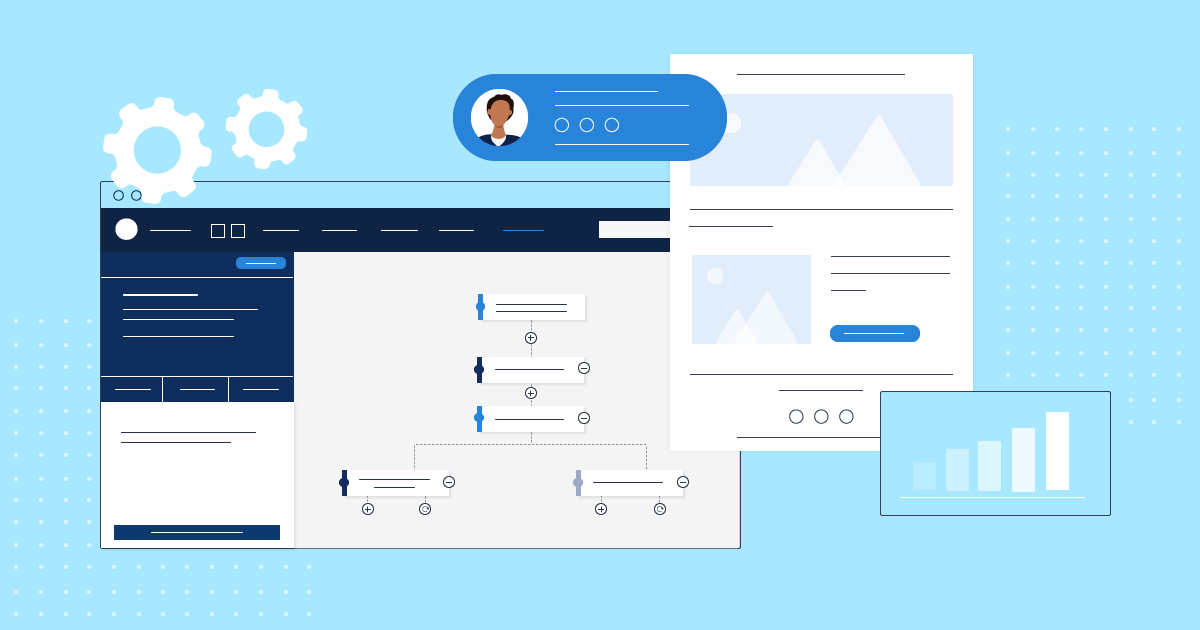
Emerging Email Marketing Trends: What To Expect In 2025
Hey there, digital wizards! We know how it feels to be caught up in the fast-paced whirlwind of email marketing. One minute, you are in, then you are outdated!
So, buckle up because we’re about to traverse the time-space continuum to discover the fascinating (and slightly baffling) world of email marketing trends and tactics.
The Evolution Of Email Marketing
In this fast-paced, tech-fueled world where trends come and go quicker than a blink, keeping up with the changing dynamics is the key to survival, especially in email marketing.
Remember when we first welcomed email into our lives back in the 90s? We were thrilled by the idea of “electronic mail.”
According to Statista, the number of global email users in 1997 was around 55 million, projected to reach 4.5 billion by 2025! That’s a mind-boggling testament to the ubiquity of email.
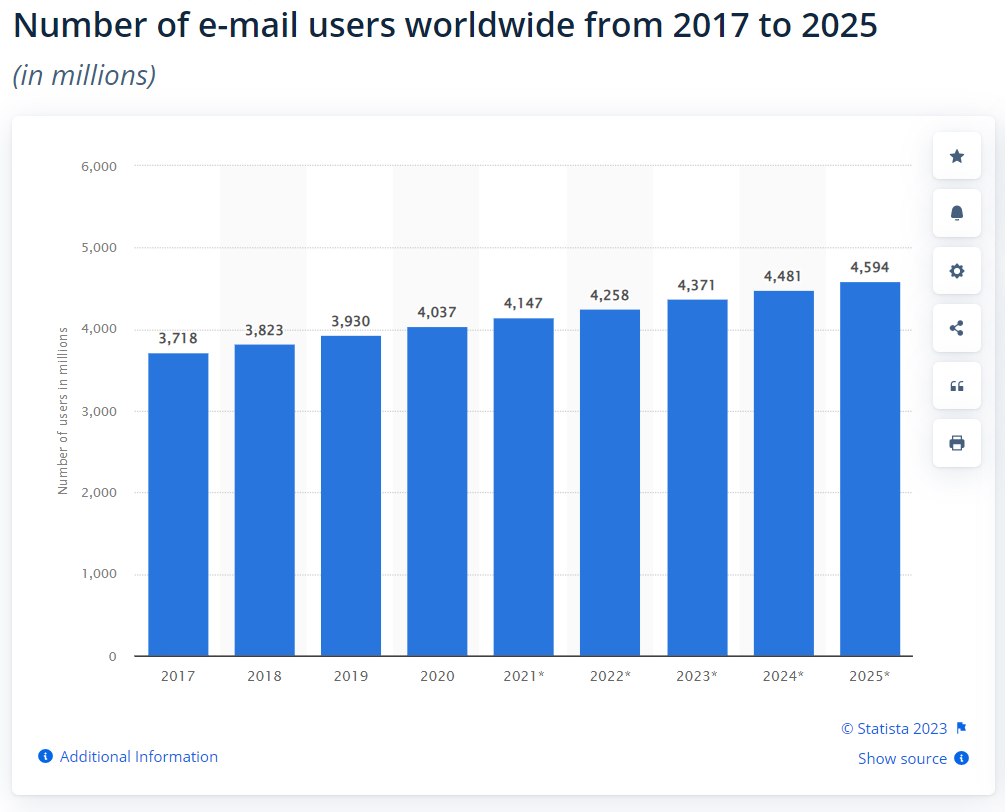
However, things weren’t always like this. Remember the surge of unsolicited emails cluttering your inbox? That was the era of ‘Spray and Pray’ marketing when marketers believed the more messages they sent, the higher the chances of making a sale.
The next notable moment in digital marketing was the dawn of email automation, a major game changer that shifted the paradigm from quantity to quality. We’re talking about email personalization, triggered responses, automated campaigns, catchy email templates – the whole shebang.
According to Emailmonday, 51% of companies had started using email automation by 2017. This showed how marketers had started valuing the potential of targeted, relevant messages, moving away from the ‘one size fits all’ approach.
The advent of email marketing platforms and software made this transition seamless. These state-of-the-art tools provided functionalities like segmenting contacts, tracking email responses, and scheduling emails, saving marketers hours of manual work.
But trends are transient. With the rise of AI and machine learning, email automation is poised for a radical transformation.
Now it’s time to fasten your seat belts as we venture into the year where hyper-personalization, AI, interactivity, sustainability, and data privacy are set to redefine email marketing.
Ready for the ride?
Hyper-Personalization For Emails
By now, it’s safe to say we’re well past the days of generic email blasts. Our audience expects more – they seek a personal connection, a conversation tailored just for them. This is where hyper-personalization steps into the game.
Here are the top email marketing trends for this year.
Laser-Targeted Content
Not just the “Hi, {First Name}” kind of personalization, but a complete revamp of the email content based on individual consumer behavior and preferences. Data analysis and AI will enable businesses to curate a unique email experience for each subscriber.
Marketers now leverage data and insights from various sources, including social media, to deliver hyper-personalized email experiences. By tapping into the vast amount of information available through social media platforms, businesses can gain a deeper understanding of their target audience and create email campaigns that truly resonate with individual subscribers.
According to Epsilon, personalized email campaigns already deliver a hefty 6.2% increase in revenue. Imagine the growth potential when you take personalization to the next level!

Dynamic Emails
Remember when you opened an email, and the discount it offered had already expired? Say hello to dynamic email content where the content updates in real-time. This ensures that your offers, news, or recommendations are always fresh and relevant.
To utilize dynamic email content, you need to collect relevant information about your subscribers. This can include data like their location, preferences, purchase history, or any other details that can help you tailor your emails to their needs and interests.
Once you have the necessary data, insert variables into your email content to create dynamic elements. For example, you can use variables like {location} to dynamically insert the subscriber’s location or {product_name} to personalize product recommendations based on past purchases.
Personalized Email Designs
From color preferences and layout to images, emails will be customized to individual users’ aesthetic preferences.
- Emails that include graphics have a 1.12% higher click-through rate than others.
- Emails that have videos can boost click-through rates by 300%.
In the quest for hyper-personalization, every detail matters – even the design. So take the time to ensure your emails are informative and visually pleasing to each recipient.
Now let’s move on to another important email marketing trend.
Behavior-Triggered Emails
These are emails sent based on the user’s interaction with your website or app. Abandoned cart reminders, page visits, welcome emails, past purchases, or even simple transactional emails can trigger a personalized email.
After all, behavioral-triggered emails have a 152% higher open rate compared to traditional emails. So this is your chance to power up your email marketing strategy effortlessly.
Moreover, recent technological advancements will play a crucial role in hyper-personalization. AI can predict consumer behavior, analyze data, and automate processes to deliver a super-personalized email experience.
Speaking of Artificial Intelligence, let’s see a few more email marketing trends revolving around it.
AI & Machine Learning – Marketing Automation
By the end of 2023, AI will be integral to email marketing strategies. Statista predicts global AI revenues will skyrocket to 125 billion dollars by 2025.
With the rapid advancements in AI and machine learning, email marketing is becoming smarter and more personalized. AI algorithms can analyze enormous amounts of data to help businesses understand consumer behavior, preferences, and triggers.
This knowledge can then be used to create personalized email campaigns that are timed perfectly and are highly relevant. Hyper-personalization is the future of email marketing. But remember, while you strive to provide an uber-personalized customer experience, maintain a balance and respect user privacy.
Here are some significant trends to watch for in 2023:
Predictive Personalization
This is the future of email marketing personalization. Predictive personalization tools use machine learning algorithms to analyze customer data and predict future behavior. This enables marketers to customize the content, offers, and even the timing of emails based on individual preferences.
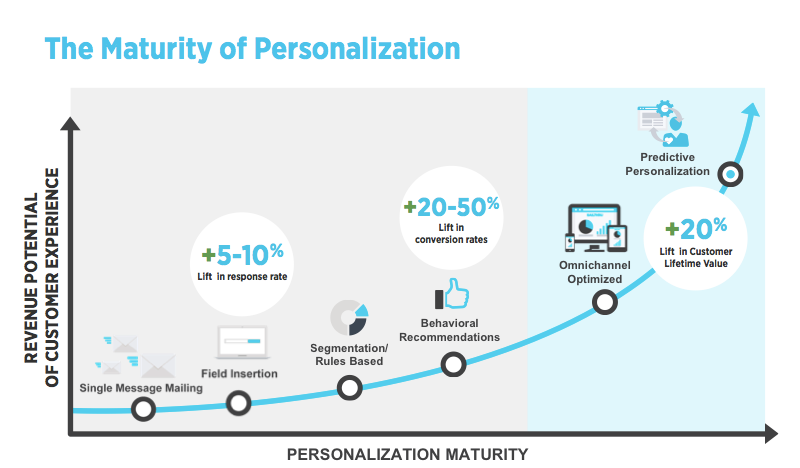
Personalization gives the much-needed boost to A/B testing. A well-thought-out experiment entails the most relevant experience to the users.
So, instead of using traditional A/B tests that provide a one-size-fits-all result, use audience segments for A/B tests.
Automated Email Triggers
As we discussed earlier, triggered emails are personalized emails that leverage the power of automation based on specific actions or behavior of the recipient.
This could be anything from a birthday wish, a follow-up after purchase, or an email nudge if a user abandoned a shopping cart. They are timely, personalized, and highly relevant, leading to a 152% higher click-through rate compared to traditional emails.
AI-Driven Content Creation
This is probably one of the hottest email marketing trends out there. AI is not only capable of personalizing emails but also creating content.
Using natural language processing (NLP) and machine learning algorithms, AI tools can generate compelling subject lines, call-to-action (CTA) buttons that take users to a personalized landing page, and even entire emails that resonate with your audience.
Send Time Optimization
AI can also help determine the perfect time to send an email to each recipient. Instead of mass sending an email simultaneously, AI can predict when a recipient will most likely check their inbox and engage with an email.
This increases the likelihood of your email deliverability and, consequently, the click-through rates.

AI and automation enable even small businesses to compete with larger ones in email marketing. However, it’s important to remember that technology is only a tool.
The success of your email marketing campaign ultimately depends on your understanding of your audience and your ability to create content that resonates with them.
Interactive Emails – Enticing Design Trends
“Click here,” “Read more,” and “Buy now!” These are common interactive elements that we’ve all seen in our emails.
But this year is set to take interactivity to a whole new level. In fact, we are about to see emails become mini-websites, complete with navigation menus and in-email shopping options!
Remember, the goal of interactive elements is to engage users, not to confuse or overwhelm them. It’s all about enhancing their email experience, making it enjoyable and effortless. Whether a fun quiz or an immersive shopping experience, the interactive content should be relevant to your brand and your audience’s preferences.
As email marketing evolves, interactive email is emerging as a game-changer. Interactive emails include elements your audience can click, swipe, or interact with directly within the email. They can take many forms, from quizzes and surveys to embedded videos and image carousels.
Let’s take a closer look at them:
1. In-Email Shopping
E-commerce brands have been pushing the boundaries of what’s possible with emails.
For instance, Forever21 replicated scratch cards within the email. The reader is presented with three scratch cards as a discount offer. This method seamlessly helps capture the reader’s attention and makes it believable.

2. Interactive Content
Quiz, polls, surveys, games – interactive content can increase click rates by as much as 300%. Why? Because they are engaging!
They demand the recipient’s participation, piques their interest, and lead to better recall and engagement. So, if you want to make your content more interesting, you need to use this email marketing trend.

3. AMP for Email
AMP (Accelerated Mobile Pages) for Email is an open-source project by Google that enables senders to include AMP components inside rich, engaging emails.
Users can interact with the email (fill out forms, RSVP to events, browse catalogs) without leaving the email client.
And the best part? Google has reported a 500% increase in user engagement for companies using AMP!
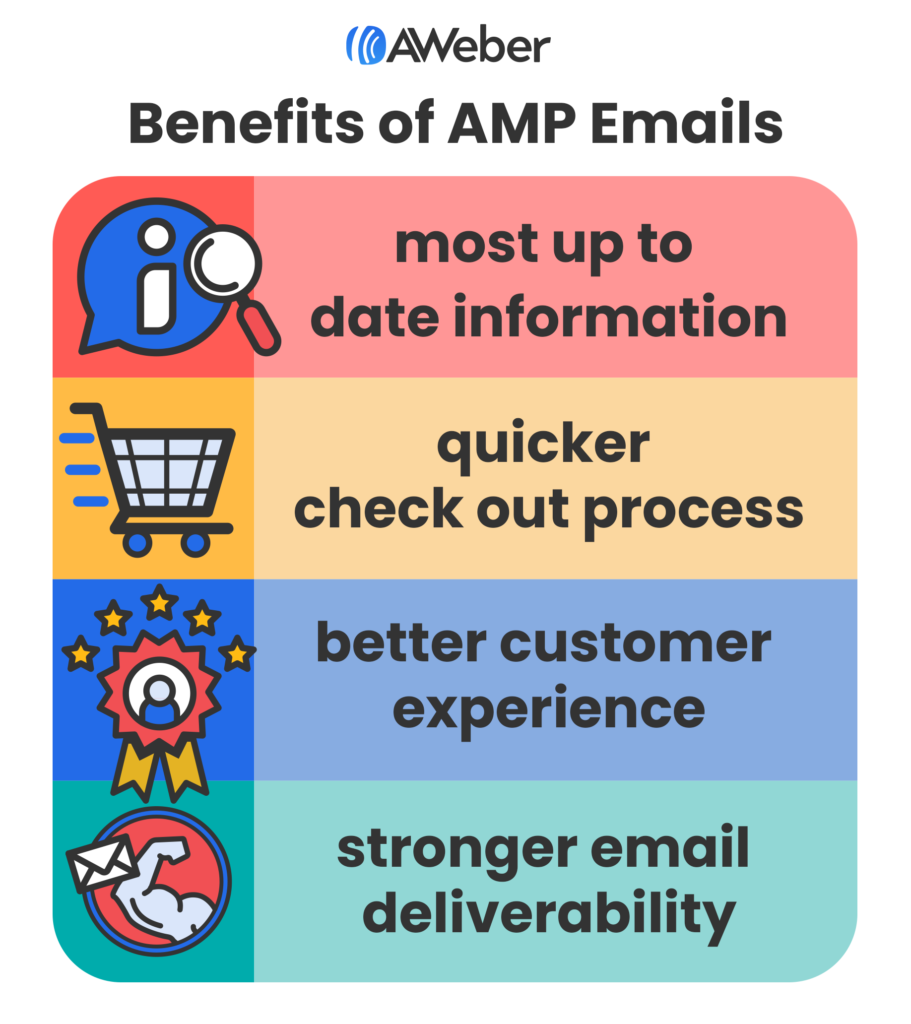
4. Surveys and Polls
Polls and surveys are a fantastic way to get your subscribers’ feedback. For example, a fashion retailer might send out a poll asking subscribers to vote on their favorite new arrivals.
This way, you can use the results to improve the customer experience, your products, and your business based on what your customers replied.

5. Countdown Timers
Nothing encourages a click-through like the fear of missing out (FOMO). E-commerce businesses can use countdown timers to promote time-sensitive deals or limited-time offers.

6. Rotational Banners or Carousels
Display multiple products or showcase different features in a single email—an effective way to maximize space and capture interest.
Use eye-catching visuals to intrigue your subscribers and make them click on your offers.

7. Embedded Videos
As per the statistics above, videos are a surefire way to boost engagement. They’re a great way to demonstrate products or share educational content.
Plus, they are one of the most exciting types of content out there!

8. Gamification
This could include a quiz, a scratch-and-win discount, or a spin-the-wheel feature. Gamified emails offer an entertaining user experience that can also incentivize engagement.
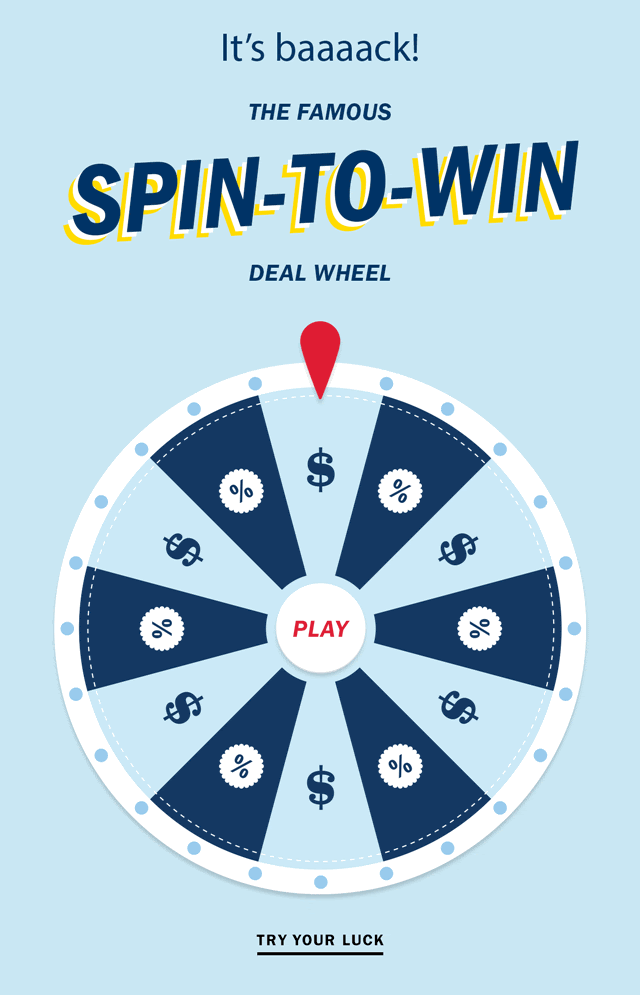
9. GIFs
Another exciting way to add visual appeal to your emails is by incorporating GIFs. These short, animated images can convey a message or evoke emotions in a fun and engaging way.
Moosend’s email marketing platform allows marketers to add interactive elements to their emails easily. However, regardless of the ESP (Email Service Provider) you choose, remember to design with mobile users in mind.
According to reports, 42% of emails are opened on mobile devices. If your interactive elements don’t translate well to smaller screens, you risk alienating a significant portion of your audience.
Sustainability – Eco-friendly Email Campaigns
In a world where consumers are becoming increasingly conscious of the environmental impact of their choices, businesses are also starting to pay attention. Sustainability is no longer just a buzzword; it’s a pressing requirement that can significantly influence a brand’s perception.
An important point is that digital processes also have a carbon footprint. According to a peer-reviewed report, the Information and Communications Technology (ICT) industry produces over 2% of global CO2 emissions, a figure similar to the aviation industry. That might seem like a small number, but with the increasing rate of digitalization, it’s set to rise unless we take action.
You might ask, what does this have to do with email marketing? Well, email marketing servers also contribute to these emissions. While this footprint is not as visible as physical waste, it’s still a significant part of a business’s total environmental impact.
How to be Sustainable
A move towards more sustainable email marketing automation is not just an opportunity to make your business greener but also a chance to stand out in your customer’s inbox.
Implementing sustainable practices in email marketing doesn’t have to be complicated.
- Choose Green Hosting Providers: Some web hosts run their servers on renewable energy or offset their carbon emissions through various initiatives. You can significantly reduce your digital carbon footprint by opting for such green hosting providers for your email campaigns. GreenGeeks, for example, is an eco-friendly web hosting company that replaces three times the amount of energy your website uses with wind power credits.
- Optimize Your Emails for Efficiency: The larger your email, the more energy it consumes. Therefore, optimizing your emails by compressing images and using clean code can help reduce their size and, consequently, their environmental impact.
- Keep Your Email List Clean: Regularly cleaning your email list to remove inactive subscribers reduces the number of emails you need to send, thus reducing your carbon footprint. Build clean, high-quality email lists instead of a spammy and cluttered data dump. Additionally, building a quality email list is the first step to nurturing relationships and driving revenue through email marketing.
- Educate Your Subscribers: Tell your subscribers about your green initiatives. Not only will this enhance your brand’s image, but it can also inspire others to adopt similar practices.
Remember, every little step towards sustainability makes a difference. As you plan your email marketing strategy for 2023, consider incorporating these sustainable practices.
Going green with your email campaigns shows corporate social responsibility and resonates with your audience, leading to higher engagement and brand loyalty.
Data Privacy – Avoiding The Creep Factor
Data privacy is not a new concern, but it’s a concern that keeps evolving. That’s why it’s always present in email marketing trends.
As businesses get better at using data, users get better at protecting it. In the world of email marketing, striking the right balance is essential.
Think about it. Your subscribers share their information with you in good faith. They trust you with their data. Misusing it or even giving off the impression that you might be crossing the line is a surefire way to lose that trust. Hence, respecting data privacy is not just a legal obligation but a moral one too.
The most important thing to remember here is, don’t be creepy! It’s cool that you have the tools to track user behavior, segment your audience, and create personalized content. However, it’s not cool to overuse these tools and bombard your users with too-specific, too-personalized emails that make them uncomfortable.
For example, if a user browses through a couple of products on your website, sending them a follow-up email with the same products can seem intrusive. Instead, you can email them about the broader category those products fall under. This approach respects their privacy while using the data to improve their experience.

While GDPR has set clear data usage and privacy rules in Europe, other countries are still catching up. But the trend is clear. Users are becoming more aware of their data rights, demanding that businesses respect them. Ignoring this trend is not an option.
With the increasing focus on data privacy from tech giants like, Apple’s MPP (Mail Privacy Protection), it’s essential to align your practices with their privacy features to ensure a seamless and secure user experience.
How to be More Responsible with Customer Data
So, as an email marketer, what can you do?
- Be transparent: Always let your users know what data you collect and how you use it. Include a privacy policy in your emails, and ensure it’s easy to understand.
- Give control: Let your users control what data they share with you and how much. Don’t make data collection mandatory. Instead, give them options. The more control they have, the more they’ll trust youData privacy laws state that people should have the control and ease to change their minds about opting in or out of their emails.
- Make it easy for users to unsubscribe: Having an unsubscribe link that can be visible only if a user has a microscope does not provide an accessible inbox experience.
- Respect boundaries: Even if a user has shared their data with you, respect their boundaries. Don’t over-personalize your emails, and don’t overstep.
It’s time to shift the focus from just leveraging data to using it responsibly. Businesses that can do this will have an advantage in the coming years. After all, trust is the foundation of any successful relationship, even between businesses and customers.
Conclusion
As we wrap up our discussion on emerging email marketing trends, it’s clear that the future is already here. It’s a fascinating confluence of creativity, technology, responsibility, and sustainability. And it’s a space that’s constantly evolving, pushing boundaries, and breaking new ground.
From embracing automation and creating interactive emails to prioritizing sustainability and respecting data privacy, email marketers have a challenging but exciting road ahead. However, the ultimate goal remains unchanged – to deliver value to the subscriber, to create meaningful conversations, and to build lasting relationships.
Yes, the tools and strategies will change. The metrics might shift. The buzzwords will update. But the essence of email marketing, the human connection, will always be at its core. In the whirlwind of trends and technologies, let’s not forget that.
So, here’s to a thrilling journey ahead. Buckle up, adapt to the changes, and make the most of the opportunities that 2023 and beyond have to offer in email marketing.
Remember, the future doesn’t just happen. It’s built by the actions we take today.
Good luck, and happy emailing!




 Published by
Published by
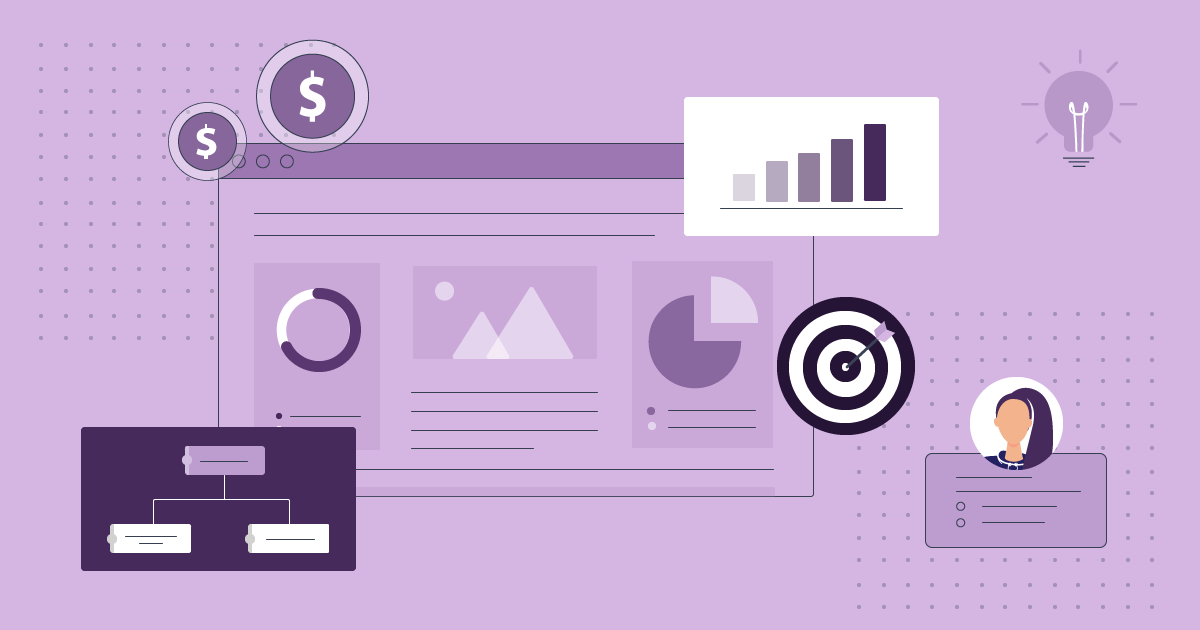
 Published by
Published by
